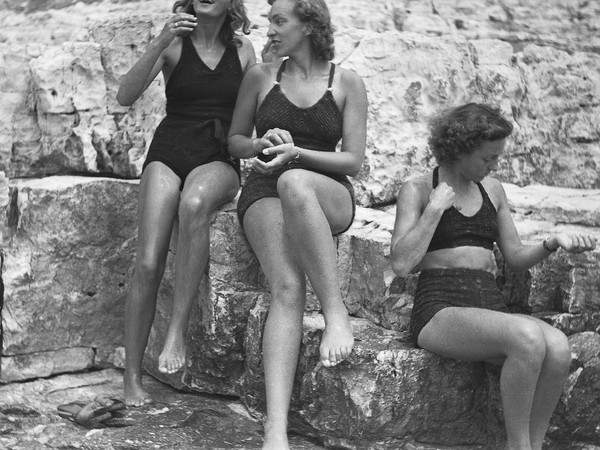Udine, anonymous photographs from the 1940s-60s on display at Arcipelago space
For its third exhibition, Udine ’s Arcipèlago creative and exhibition space presents a careful selection of about fifty anonymous photographs taken between the 1940s and 1960s. These images, totally unpublished, are part of the personal collection of Cristian Malisan, who, for years, has been recovering photographic material in flea markets: thousands of negatives, rolls, slides and as many stolen moments that no one remembers anymore and that, on the occasion of this exhibition, will be rediscovered.
Anonymous and orphaned, these images are enigmas: indeed, over the years they have ineluctably undergone a narrative erosion linked to the disappearance of the photographer, the protagonists, and all those who shared those tales of ordinary life. Until the moment when, nothing left of the reality they bear imprinted, they ended up at the edge of the trash, ready to be forgotten. And it is precisely here that their rediscovery has the miraculous. These images represent a story that , deep down, everyone shares. The intimate moments of family life, often funny, surprising and moving, are in some way the story of all our lives.
“Diving into the past lives of these strangers is a fascinating journey through av collective memory rod, a universal yet familiar kaleidoscope. For if the names, dates and places are lost, the permanence of emotions endures,” explains Artemio Croatto, co-curator of the exhibition. “And these clichés, which no longer belong to anyone, become everyone’s images.”
Through the Lost and Found project, Arcipèlago explores the art of the ordinary and the importance of vernacular photography. This practice, often reserved for amateurs, stands outside what is considered worthy of interest by mainstream instances of cultural legitimacy. It develops on the periphery of what is of reference in art . It is the other of art.
“Every amateur practice of photography,” Cristian Malisan explains, “with its risky shots, its unusual situations, its faces rendered to anonymity, is by nature ’familiar.’ They are rarely ’beautiful’ clichés in the artistic sense of the term: yet they hold, they solicit more than any other object. Mine is not a collection in the strict sense, I do not collect these images because they are well made or because I hope sooner or later to find Capa’s D-Day roll of film; mine is rather a mission: I want to save these families from the erasure and oblivion of time . I think that if these negatives have come down to me, it means that the families represented in them are extinct, terminated, and that there is no relative, friend, acquaintance capable of collecting and preserving their legacy.”
A catalog will be published for this occasion, with a contribution by Roberta Valtorta, photography historian, scientific director of the Museum of Contemporary Photography in Cinisello Balsamo - Milan and professor of History and Theory of Photography at the Bauer Center in Milan.
Cristian Malisan studied architecture at IUAV in Venice and later graduated in Design at the same institute. From 2009 to 2016 he co-founded Studio Barazzuol/Malisan. In 2016 he opened Studio Malisan in Udine, working on strategic image consulting for various companies, graphic design, product design, interior design and branding projects.
The exhibition is open until Jan. 22.
For all information, you can call +39 389 24 50 535 or email contact@galleria-arcipelago.it.
Ph. credit: Cristian Malisan Collection
 |
| Udine, anonymous photographs from the 1940s-60s on display at Arcipelago space |
Warning: the translation into English of the original Italian article was created using automatic tools. We undertake to review all articles, but we do not guarantee the total absence of inaccuracies in the translation due to the program. You can find the original by clicking on the ITA button. If you find any mistake,please contact us.




























